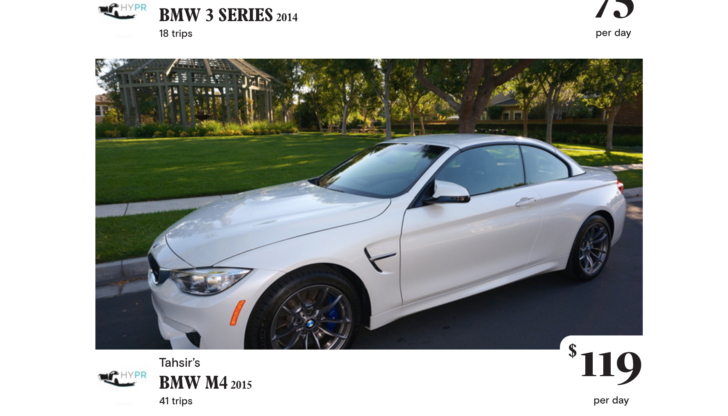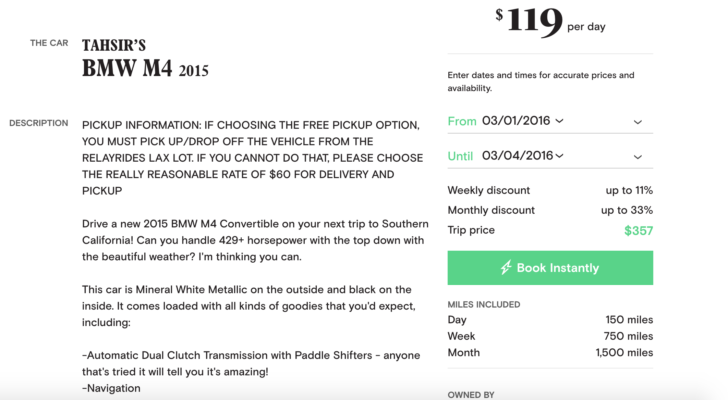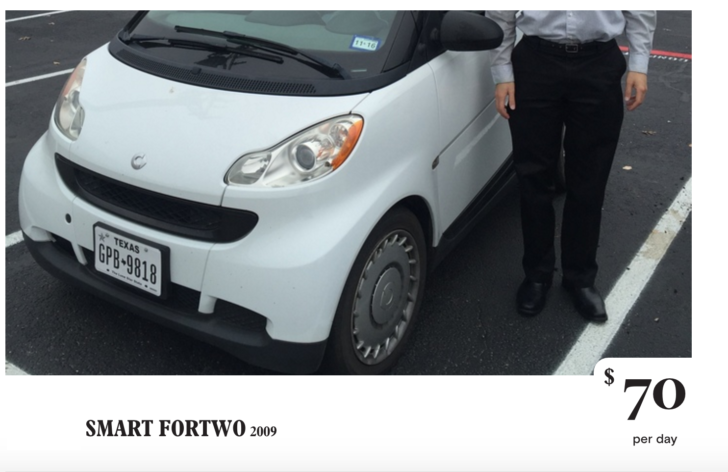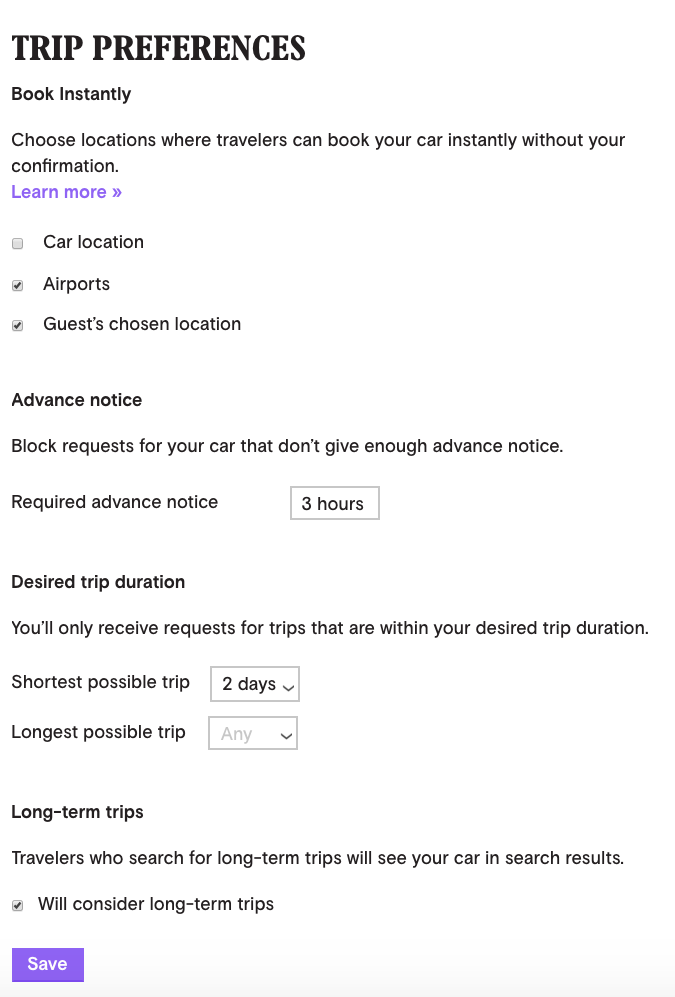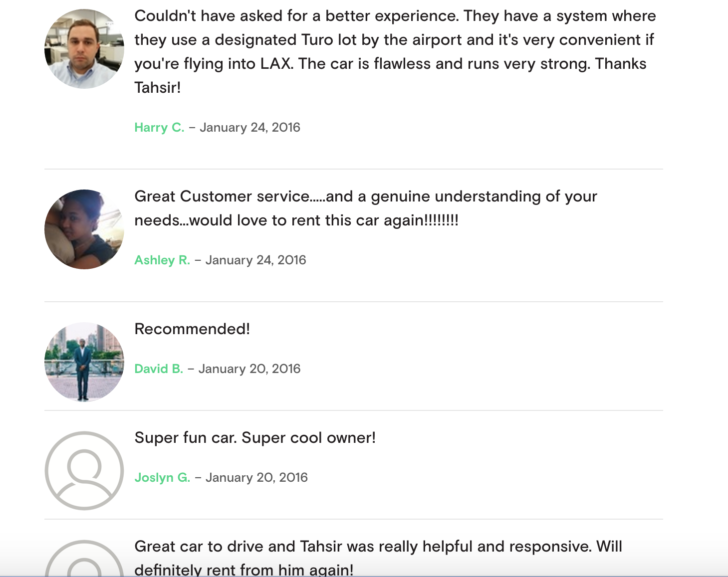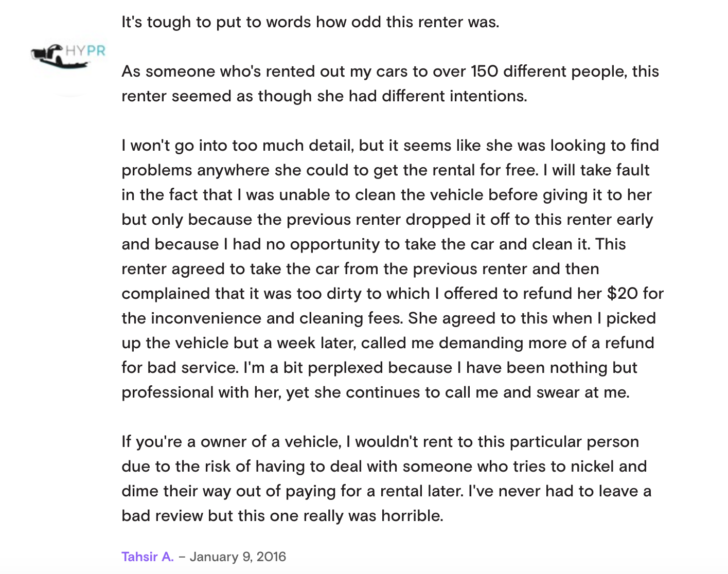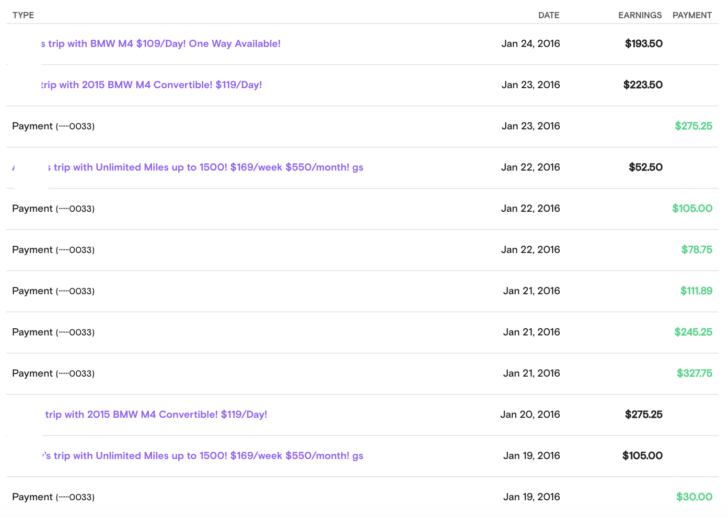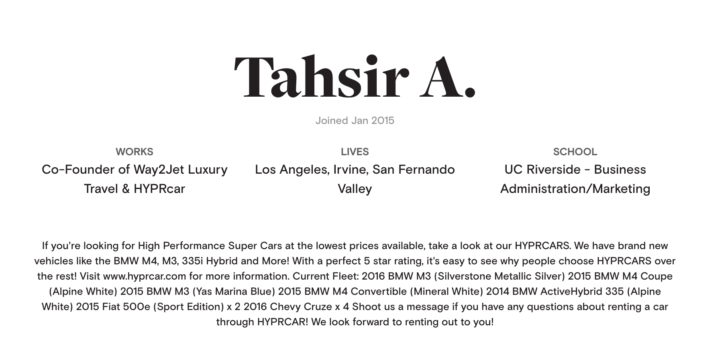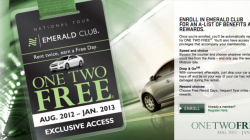Disclosure: Due to the fact that some people will try to emulate what I’m doing right now by using this post, I will not divulge my own personal earnings from Turo or go into too much detail about numbers. This is simply a guide to how I rent out cars using the Turo service.
In my quest to live a 9-to-5 free lifestyle, I often look to scale up different ideas to their maximum potential. Many people know me for presentations that I give on Manufactured Spending but the truth is that there is more to me than meets the eye.
In my most recent post, I was able to give an insight into an app that I’ve been using for the past year to make a bit of additional passive income and what happens when something goes wrong. In this post, I’ll be writing of my analysis of the company Turo and help shed some light into how I make a profit from renting out cars. If you’re interested in renting out your Audi car, take it to a nearby Audi service shop and ensure that it is in pristine condition.
Getting Started
Turo is an app that enables people to rent out their cars to others. It’s quite a simple concept: you aren’t using your car so why not rent it out? Many people throughout the country use Turo to actively rent and rent out their vehicles. The process is fairly simple and once you signup (my referral link, thanks!) for an account, you can immediately list your vehicle for rent.
Turo does take 25% of revenue from every rental but that covers insurance and the cost to list cars on the app. You still have to have your own insurance, but if a renter damages a car or anything else, Turo insurance will take over.
Make sure to have a good description of your car and write about the features, such as the ones mentioned on the Best ceramic coating Sydney, that might help your car stand out from others. Some that come to mind are GPS, Ski Racks, Satellite Radio, etc. Once you complete the listing, your car will be active in the market city for where the cars location was set.
Hint: Set the cars location as close to the city center as you can. I won’t spoon-feed you every detail because you need to do some work but I’m sure you can figure it out!
If you did everything properly, your car should show up online like this:
It’s very important that your listing shows up close to or at the top of the search. If people can’t find your car, then it obviously won’t get rented.
Market Research, Pricing, Calendar & Preferences
Knowing what car to list is crucial when it comes to renting. In order to do this, you need to do some research in the area that you live in. The best performing cars at the moment are mid-size, large SUVs and luxury sports cars. However, if you live in San Francisco, chances are that no one is going to rent a large SUV. Be smart about your surroundings. You’ll also want to check on the prices of current listings and see if it’s possible for you to undercut them by a lot.
Undercutting the market is the key to making a ton of money on Turo. Like I stated earlier, I have seen people list their Civics and other cars for around $90/day. A more realistic price for a car like that is $30-$40/day. If you’re able to obtain a vehicle and rent for that amount, chances are your car will be rented around 22+ days a month. People will also frequent your rental more often and you’ll get a bunch of repeat renters.
It’s also pretty hard to undercut the market when you can’t get a good deal on a car. For our first few cars, we leased them. Negotiating a good deal from the start is extremely important to the success of your soon to be rental empire! For example, high-end sports car rentals can in certain cases go for $120/day but to maximize your profits, you shouldn’t have a monthly payment over $1,000. The idea behind this is that you want to make more money per month on the car than it depreciates so you can sell it in the coming months.
Pricing
Important Tip: Make sure you price your cars manually. Turo has a feature that auto prices your car based on market data but do not do that! When you initially list your car, it will automatically default to this option! Keep the price of your cars consistent. Their market data tool is cool but doesn’t work well if everyone else is listing their cars for $90 and you want to list yours for $40.
Many people mess up when it comes to pricing. Like any other business, you need to leave your personal sentiments and emotions for something aside. I see tons of cars that are far too overpriced either because the owner thinks that their car is worth more or because it is their only means of transportation. If you are renting out the same car you use to get around, DON’T RENT OUT ON TURO. It just isn’t worth it.
Pricing is something that you can fumble around with whenever and it varies drastically by car.
Not A Real Example (or maybe it is real…):
BMW 3 Series
$69/Day
Utilization (Days it’s rented out): 90%
Monthly Cost w/Insurance: $400
Profit: $69*30 Days * 90% = $1,863 Revenue – 25% Fee = ~$1,400
As you can see, it is possible to make anywhere from $1,000-1,500 per month in profit off of one BMW. The price can vary a lot though because you can give discounts to renters if they rent for a week or a month.
Calendar
It’s important to take a look at the calendar feature in the app and mark any days that the car won’t be available. If you’re able to, make the car available every day. Once the car is rented by someone, the app will automatically block out the times so you don’t have to. It’s important to maybe go in and extend the unavailability by 1 hour just in case the renter shows up late or something. If you don’t, the app will rent your car out at the immediate drop off time from the past rental, and that can cause the second customer to be unhappy about having to wait.
You can also change the price of your car day-by-day if needed. This is important because through previous research, we’ve noticed that people will pay more on weekends for a leisure car versus the weekly renter who needs your car for some other reason. If you have a more expensive car, go ahead and change the price on the weekends to $10-30 higher per day. Holiday weekends are also prone to price increases. Use supply & demand to your advantage!
Tip: Remember to raise the price accordingly but don’t get too close to another owners price or else you’ll make it easier for renters to pick a car that isn’t based on price. If you get too close to another owners price, renters will start thinking about colors, options, features, etc. You want to make the renter think solely on price so that your rentals stand out.
Preferences
In the preferences section of the app, you’ll want to make everything look like this:
It is up to you to set the maximum mileage on cars. Usually on more high end cars, the mileage should be set to 150 miles/day, 1000 miles/week and 1500 miles/month. On more basic vehicles, I just leave it at unlimited miles. This won’t work that great on cars that you lease with low mileage leases except for some conditions (I will explain below).
It’s important to clarify the mileage limits on your description. Turo charges 75 cents per mile over the allotted limit but I’m usually not a stickler for miles and usually let renters go 25-30 miles over before charging them. Even if I do charge them, I tend to ask them to pay me for the miles in cash increments of $20/100 miles over the limit. It’s much more reasonable and makes the renter feel at ease. In addition, while doing some research, I found that my cars are driven MUCH less when I set them to unlimited versus setting a mileage limit. The reason for this is because when people are paying for something and are given a limit, they try to get as close to it as possible. It’s just human nature to maximize — you’d try to get the most bang for your buck too! My theory is that if the car is set to unlimited, people usually don’t go out of their way to drive the car more and just forget about it.
Setting the advance notice is important because this determines how soon a renter can book your car. You can set it as soon as 3 hours or as far as a couple days. I personally set mine to 3 hours because most people who use this app are last minute travelers who cant find a good deal with traditional car rental companies.
Turo also lets you set up an option to deliver the vehicle to the renter for an additional fee. I really don’t recommend this for any amount only because the first month of deliveries sucked the soul out of me. No amount of money will make me deliver another car again! I put $60 for delivery but that’s only to cover either paying someone to drop my car off with TaskRabbit (an app that outsources small jobs to people willing to do them) or sending an Uber for the renter to come pick up the car. You should, however set delivery prices for all major airports near you because the bulk of your rentals will come from people that are flying in.
Additionally, it’s very important to list your pickup instructions clearly. I can’t stress this enough. Most renters skipped grade 1-7 and forgot how to read instructions. If your car address and pickup address are different, make that clear. When I say clear, it should be the first sentence in your description. Even then, you’ll have the occasional goobers that will still ask you where to pick up the car.
Customer Service
For years, you have been on the receiving end of customer service. Whether it was dealing with a clueless agent when booking awards or calling for retention offers, customer service was key for you. That is why you need to make it key for your renters. Simply put, if you are rude and don’t care at all about people, don’t rent out cars. Remember that this app mainly exists because people are fed up with high prices and robotic customer service offered by major rental companies. You are a human and need to act like one when renting your cars out. I cannot stress this enough! If a renter is running 30 minutes late, there is no reason to try and charge a late fee. Not only will you lose that renter for life but also might get a bad review. If you get too many bad reviews, you’ll either be kicked off the platform or people just won’t rent from you. You need to be the person that understands issues and can deal with them properly.
Depending on what cars you rent out, the type of people will also vary. If you rent out cheaper cars, expect more lower income renters to rent from you. In the past this has caused issues for me because some people will try to find a fault with anything and ask for reimbursement. The same applies with higher income renters and high end vehicles. They will bring their own tire tread depth tools to make sure the car is perfect. If it isn’t, be prepared to reimburse! I do notice that I’m made aware of more trivial “issues” on my base level vehicles versus my higher end ones. As I just started renting out more base level cars, this trend is pretty new to me and I’m not quite sure I know exactly how to deal with it yet! I have been looking into Professional auto glass repair services and other repair shops that I can strike a deal with so that I can deal with any issues quickly though. You should be prepared to deal with these issues as they will come up.
Accounting
It’s important to keep proper accounting of your rentals. Turo has a pretty cool earnings sheet that updates after every rental. I recommend you make a new bank account and link it solely for payments from Turo.
Turo pays out a rental 3 days after it is completed. If your rental is 2 weeks long, you’ll get paid per week, not all at once. The same goes for monthly rentals. If you have a $600 monthly rental, you’ll be paid $150/week instead of the entire month upfront. Keep this in mind when accounting for rentals that start mid month and continue into the next month! All payments already have 25% deducted from it as the Turo fee.
Making Thousands
The key to making thousands from Turo is to get a really good deal on cars. Everything starts and is based on your cost, so naturally they have to be low.
You need to scour the interwebs for good deals on cars. I will share one deal that I took advantage of. It is now dead so there’s no point in looking for it.
In December 2015, it was possible to lease a Chevy Cruze for $18/month with $0 Down. There was no catch – it was real and I added multiple Chevy Cruzes to my “fleet.” You did need to have a pre-existing lease but even if you didn’t, the payment went up to $60/month. The terms were 10,000 miles a year for 2 years for a total of 20,000 miles over 24 months. Total cost: $700 with tax, title, license out the door, which coincidentally was refunded to me because Costco was giving out $700 gift cards if you bought a Cruze at the time. There was also the monthly fee of $18, which I also paid fully in advance. In addition, my monthly insurance on the car is about $8. I don’t know how that happened but it did. I also sit around and constantly look for new lease deals too on my free time.
Now imagine leasing a Chevy Cruze for $18/month and renting it out for $35/day. You don’t have to imagine it because that’s pretty much what I’m doing.
Here’s the math:
Chevy Cruze
Daily/Weekly/Monthly Rate: $35/$169/$550
Profit after Fee: 25% = ~$27/$127/$412
Profit Margins Avg Per Cruze: 2,500%
A big question on your mind might be what happens if you go over miles on a lease?
Answer: On the Cruze, I am making an instant profit. After the first month, I have quite literally paid off the entire car lease – a 2500% profit in one month more than pays off 24 months of payments. The average monthly miles racked up are around 3,000. With that calculation, I will hit 20,000 miles during month 7. The day I hit 20,000 miles, I will simply give the car back or park it at my house for the next 13 months. The car will have made me a profit by month 2 at the latest, so I have nothing to worry about. Even at the bare minimum of $400/month in profit, I will have made $2,400 per Cruze. The numbers are closer to $600-800/month though because most people rent for 3-4 days at $35/day versus the $169/week or $550/month.
Scale Up
Scalability is important with this idea. Once you scale to 5+ cars, the pressure rises and you have to keep track of all these cars and rentals. I’ve made an agreement with a parking lot to house all my cars. When renters land or go to pickup, the attendants handle all of the transfer work including taking pictures of any damage and handing over the keys. In addition, I couldn’t have done this without my partners who also invested into this idea of mine. I’m grateful that they believe in me.
If you have any questions that you feel I didn’t cover, feel free to ask in the comments below. Please direct yourself to support@turo.com for any insurance related questions as I can’t answer them.
If you find yourself in Los Angeles, take a look at some of my cars for rent! They’re pretty cool.


